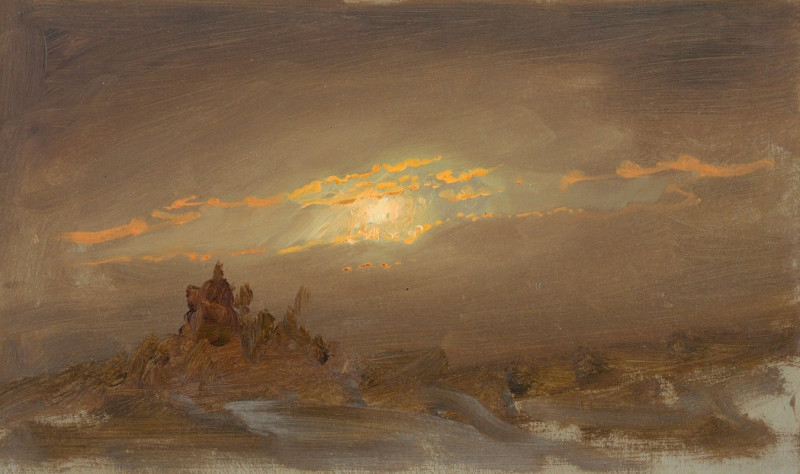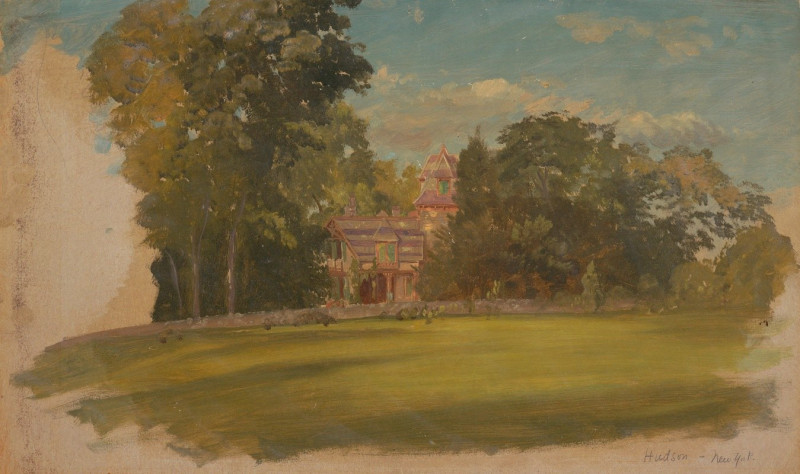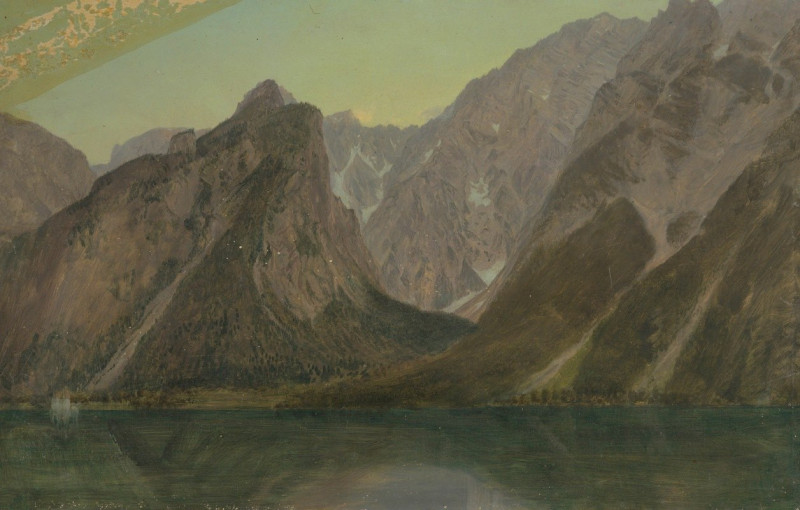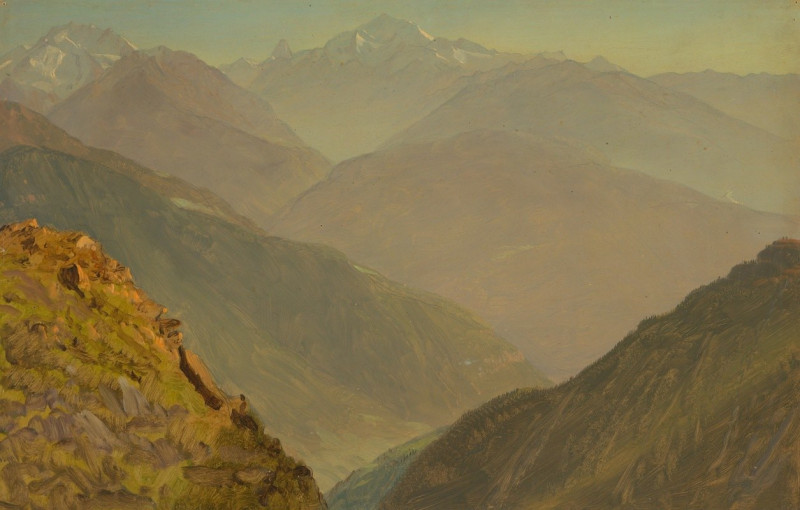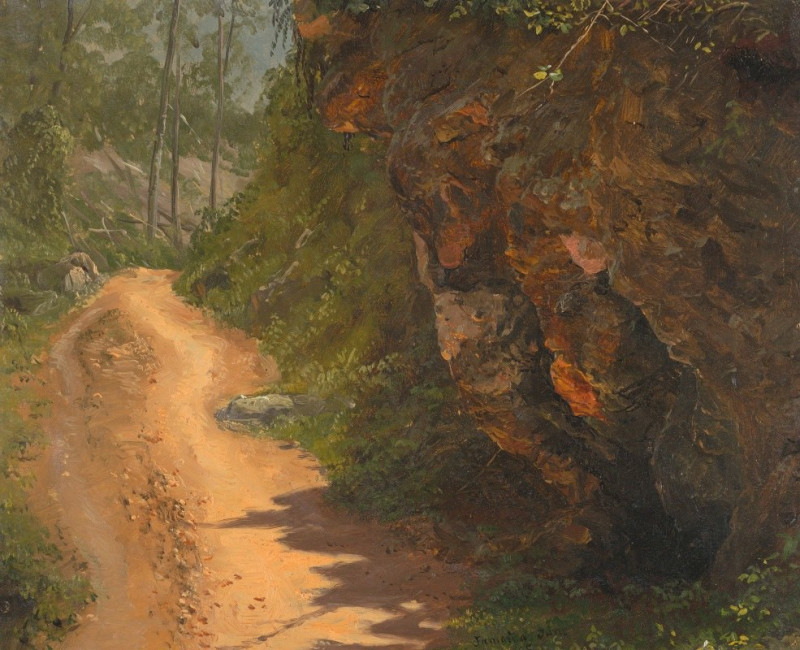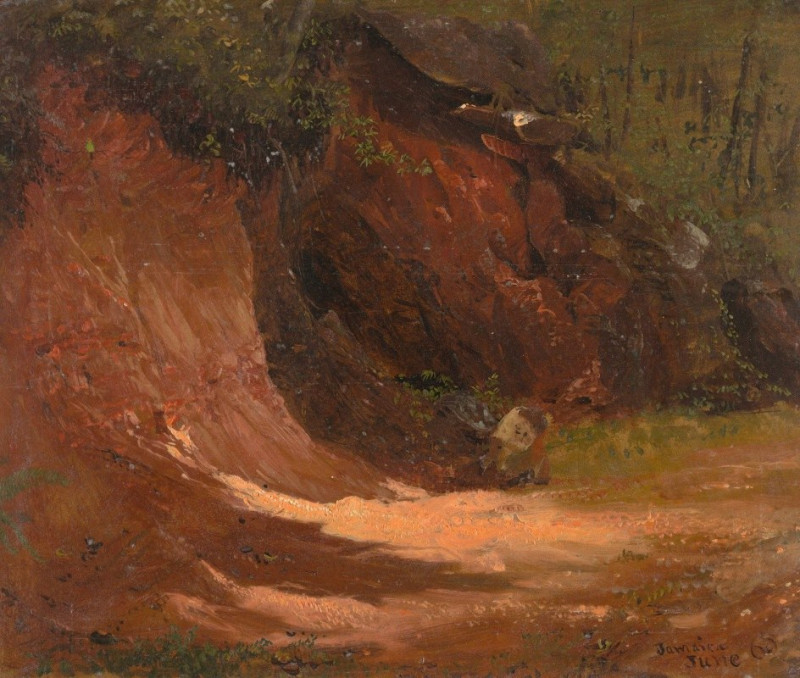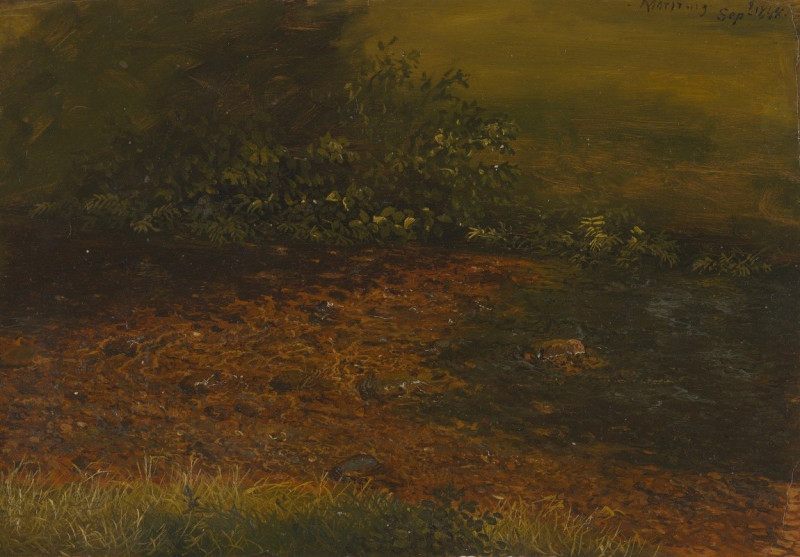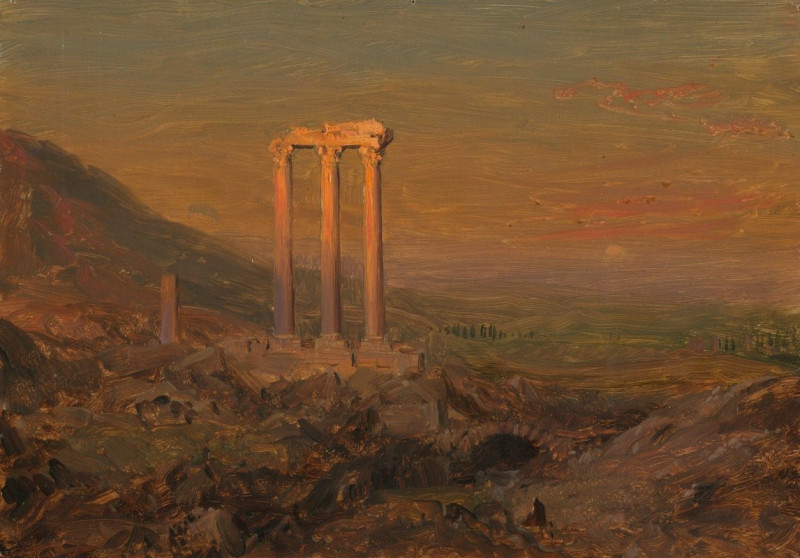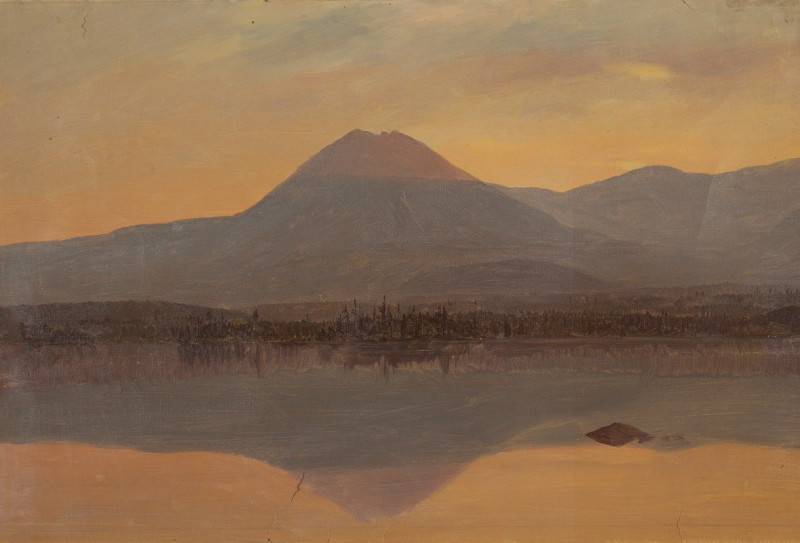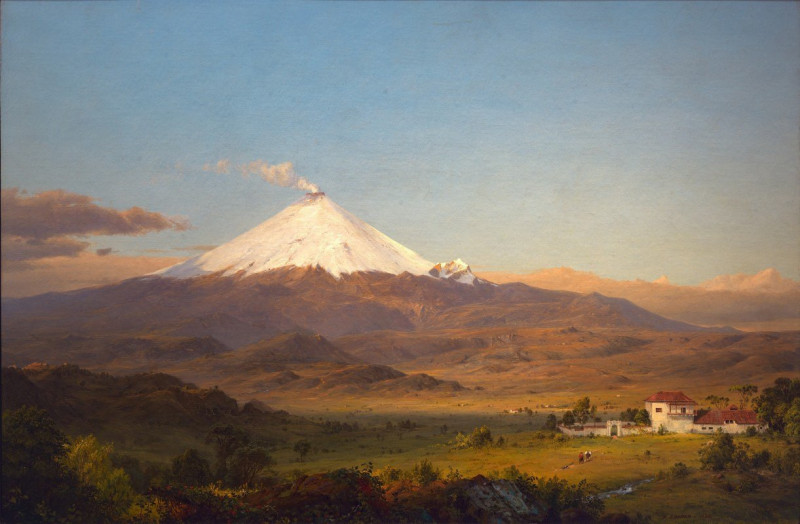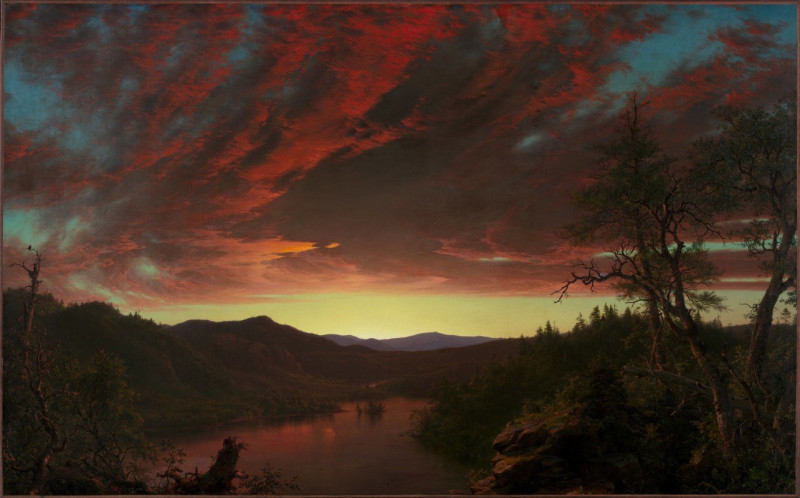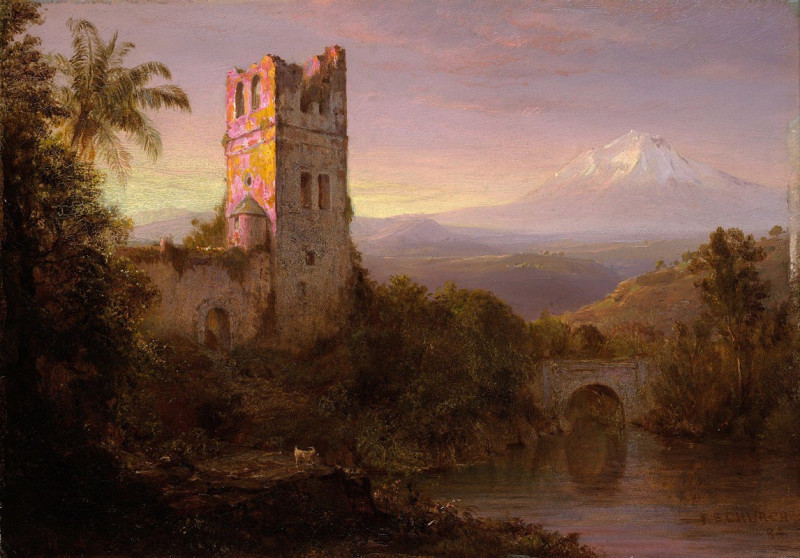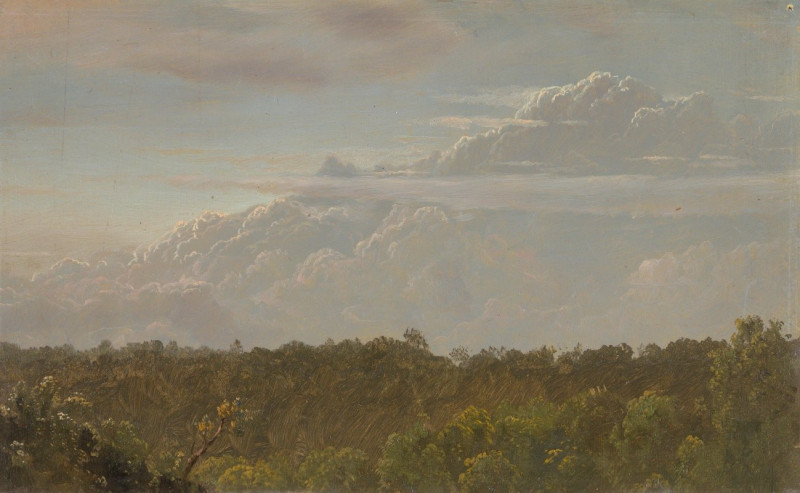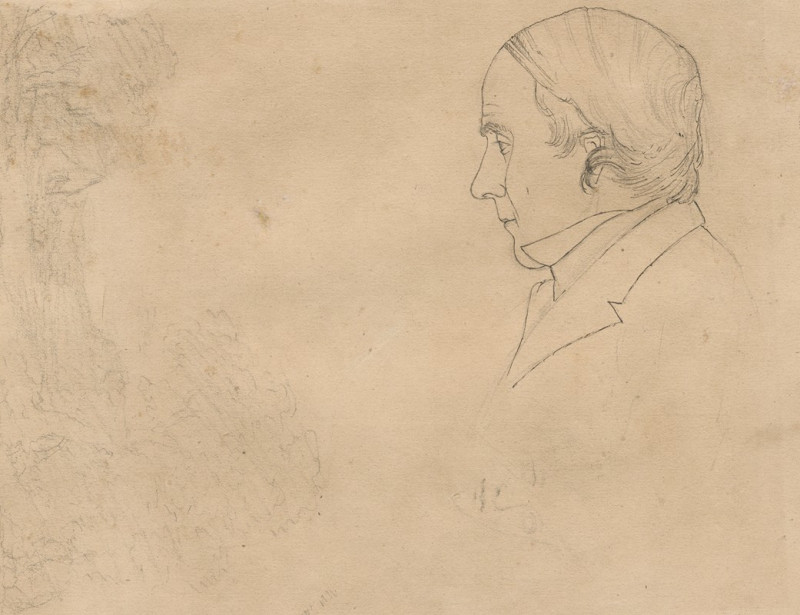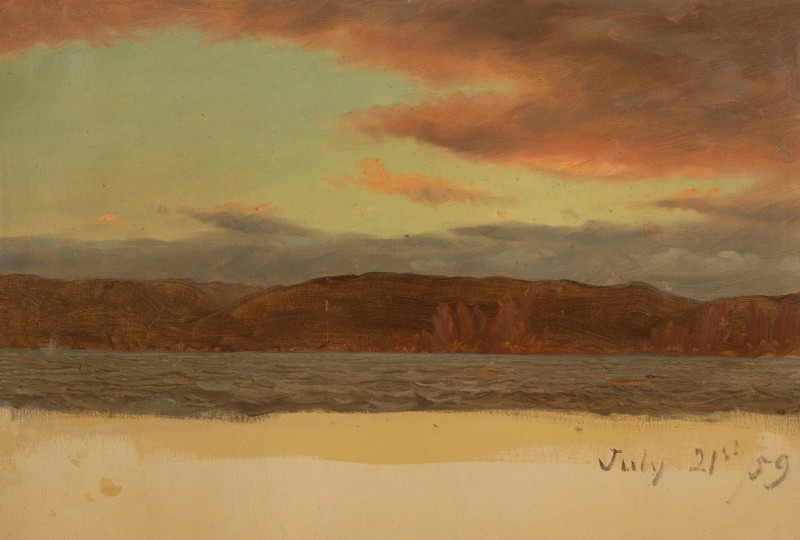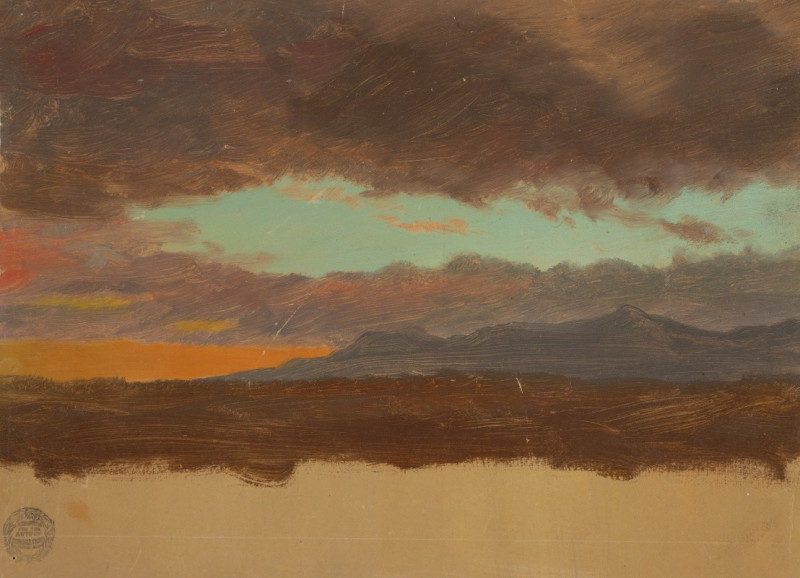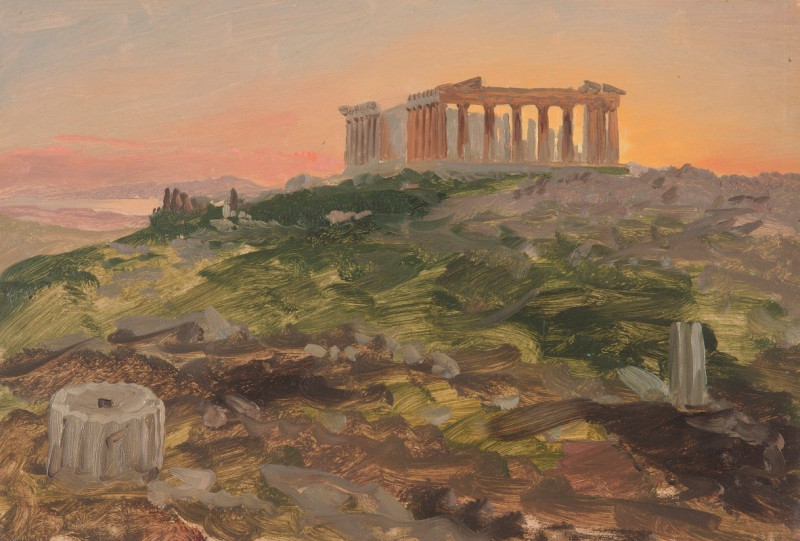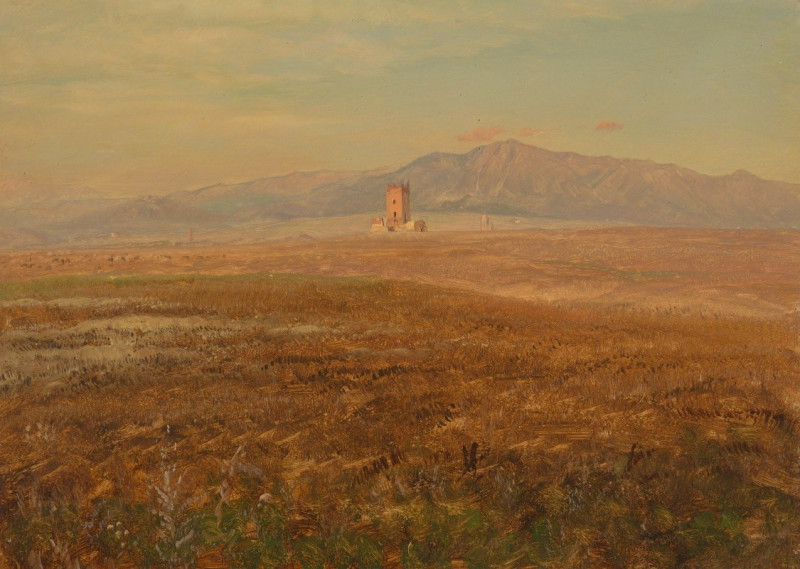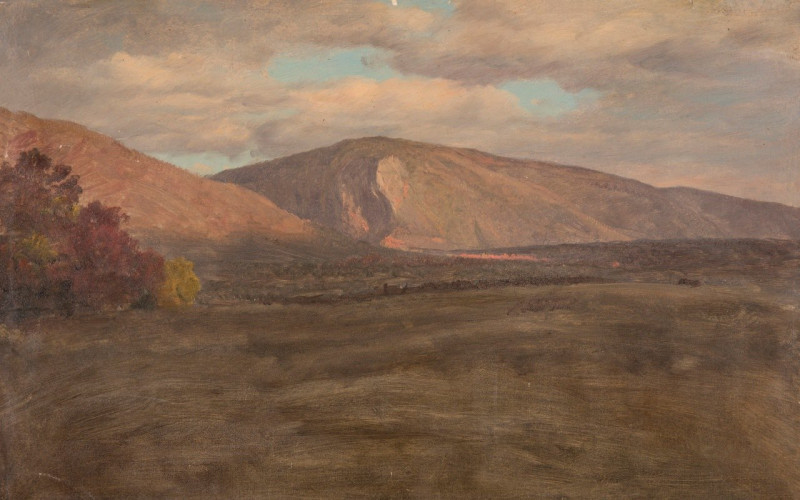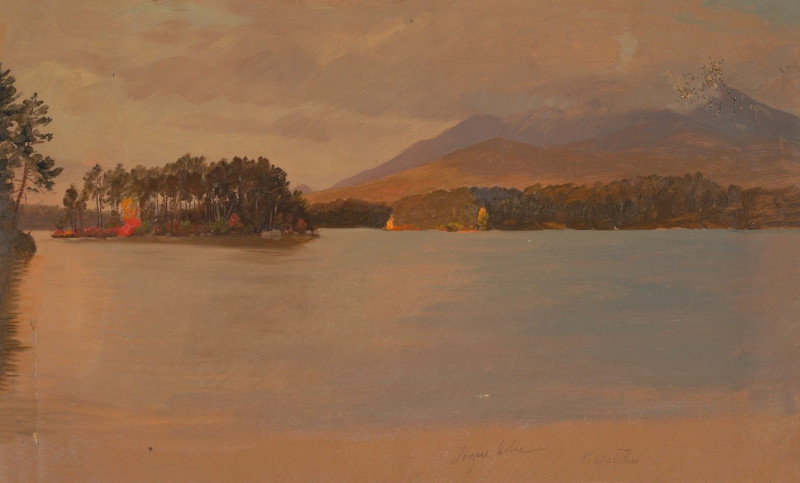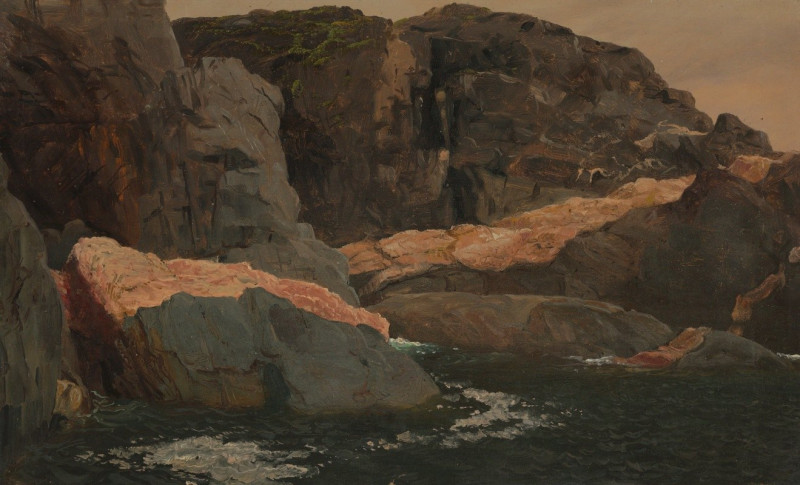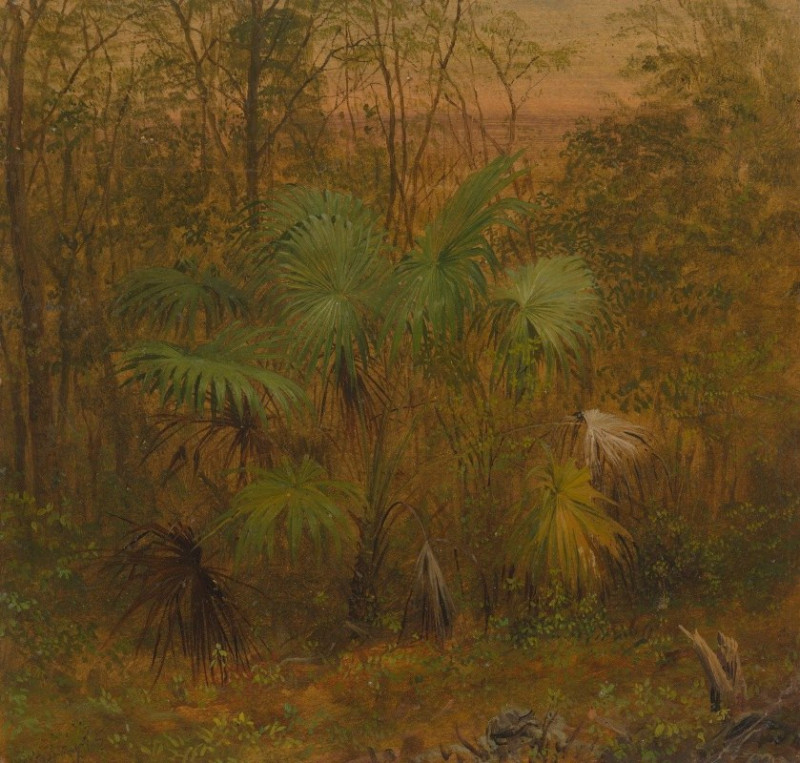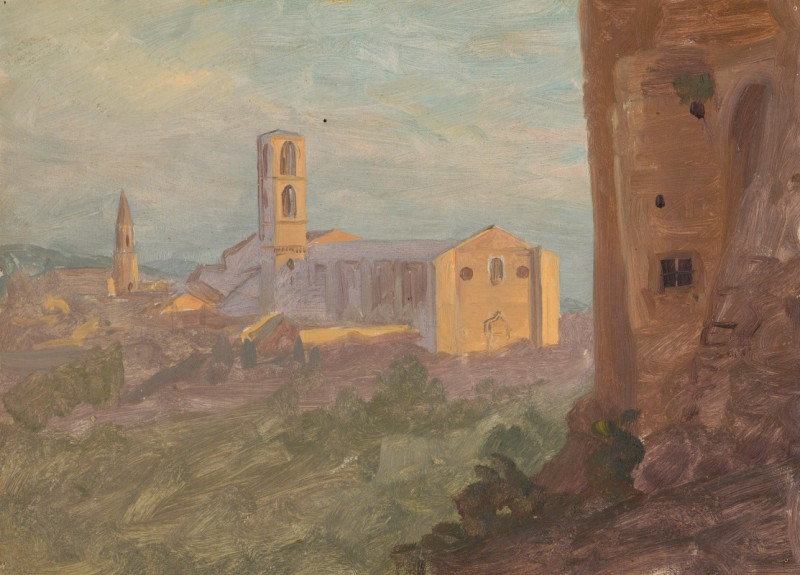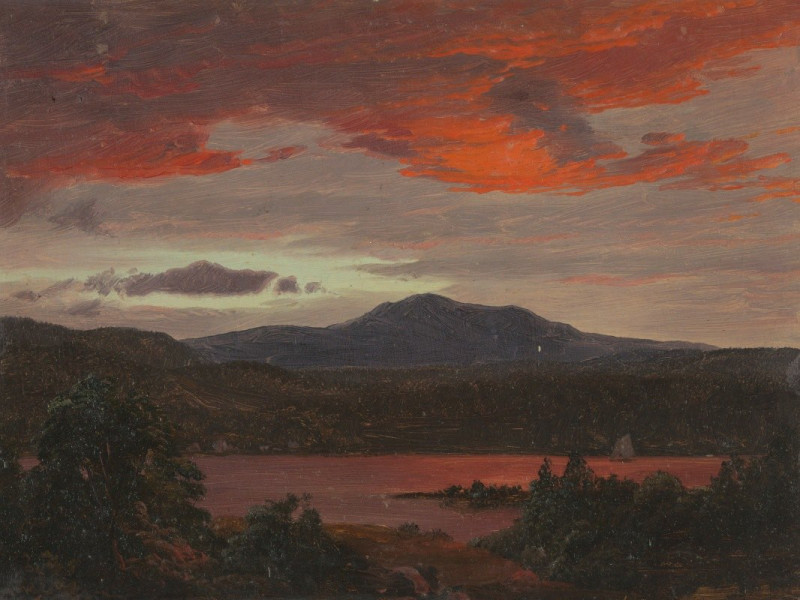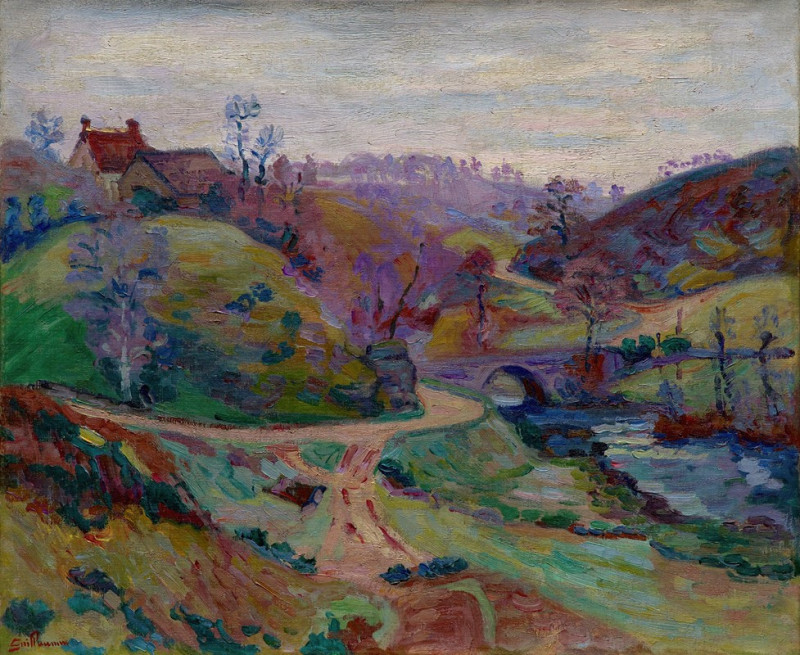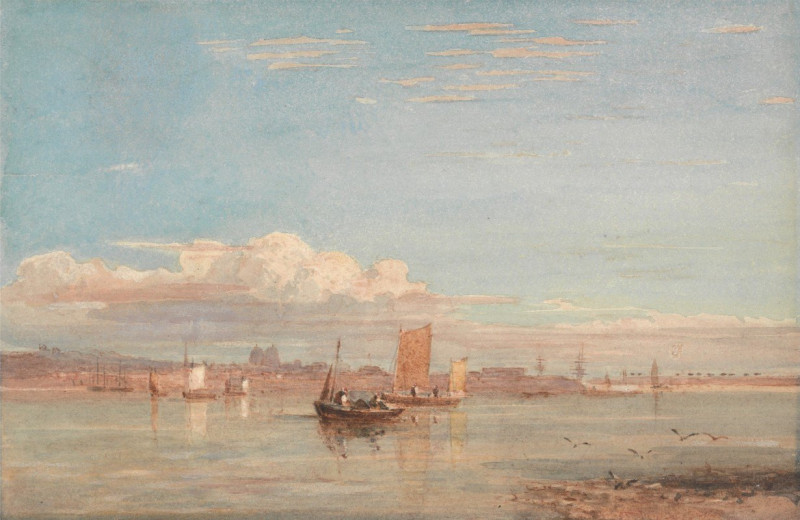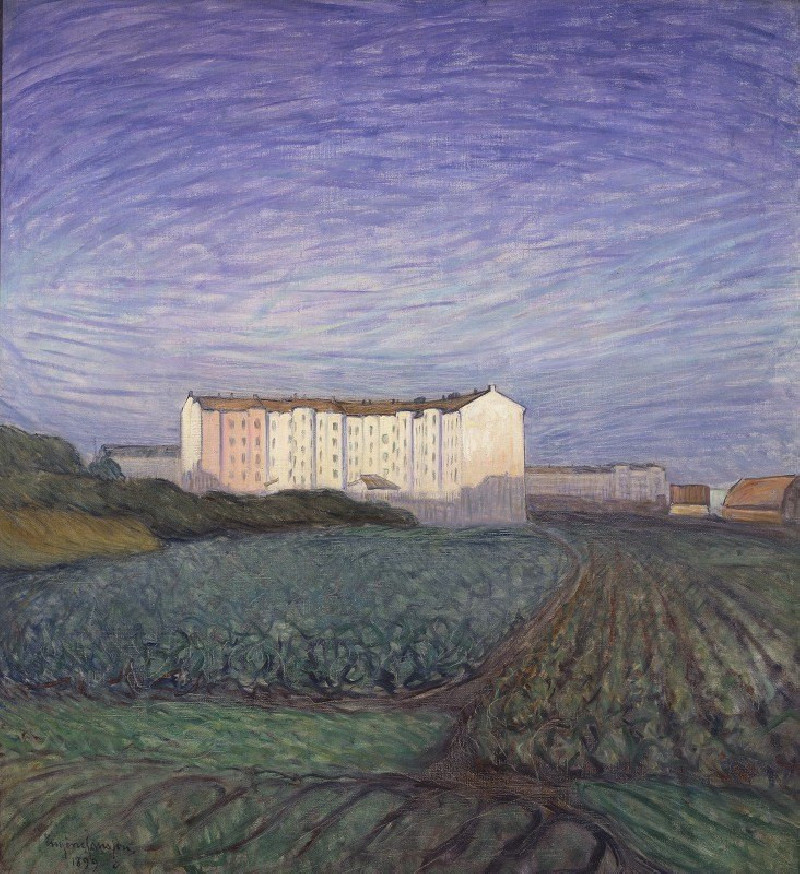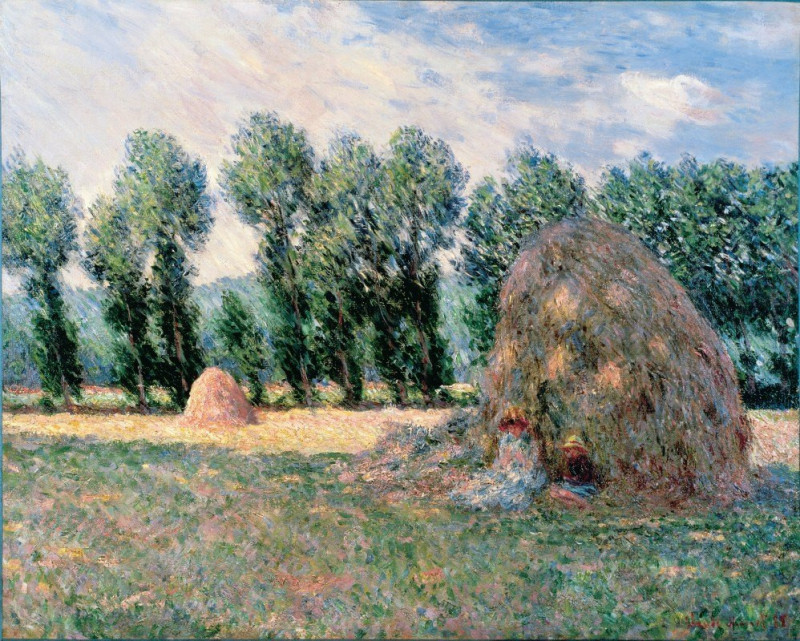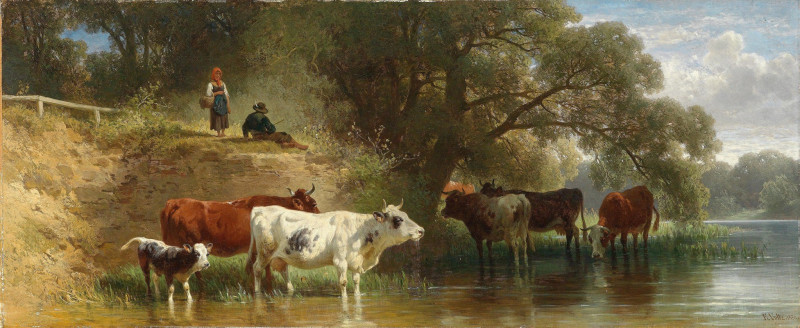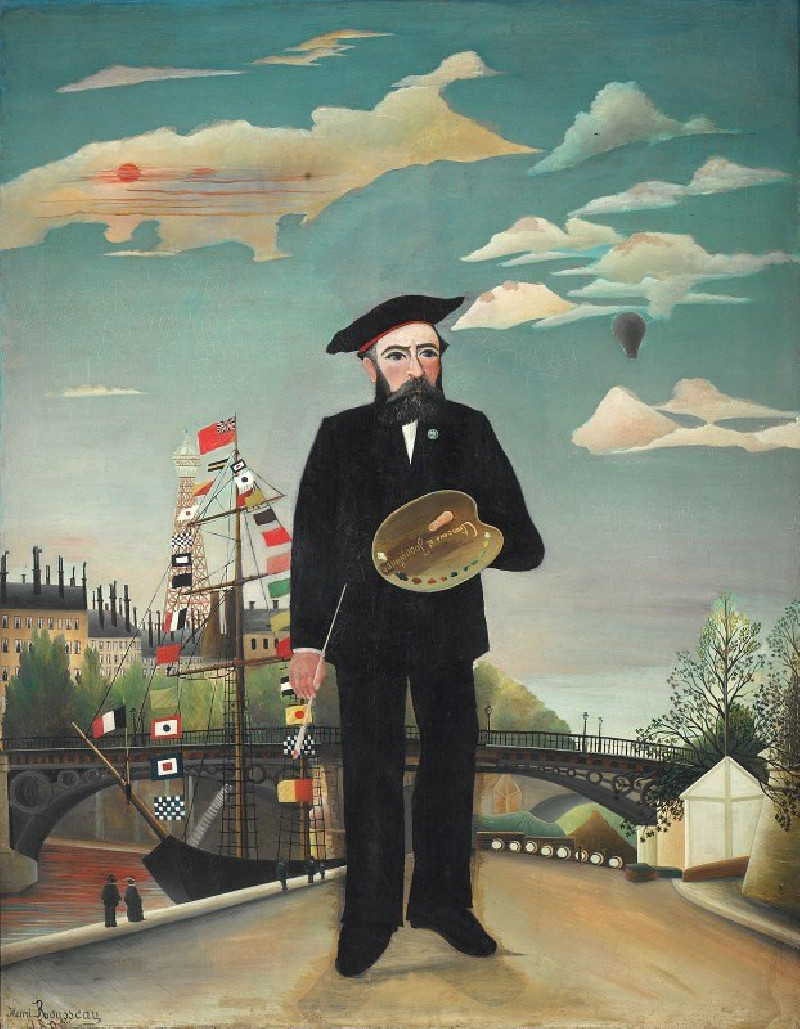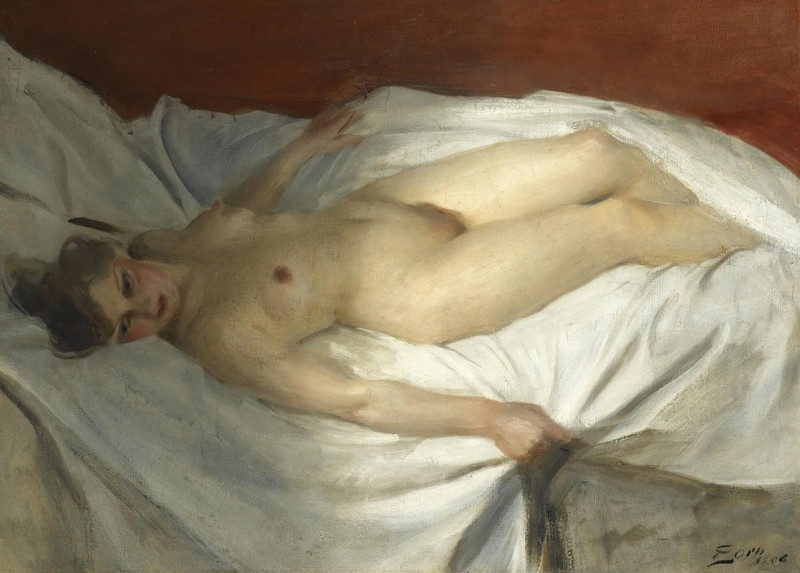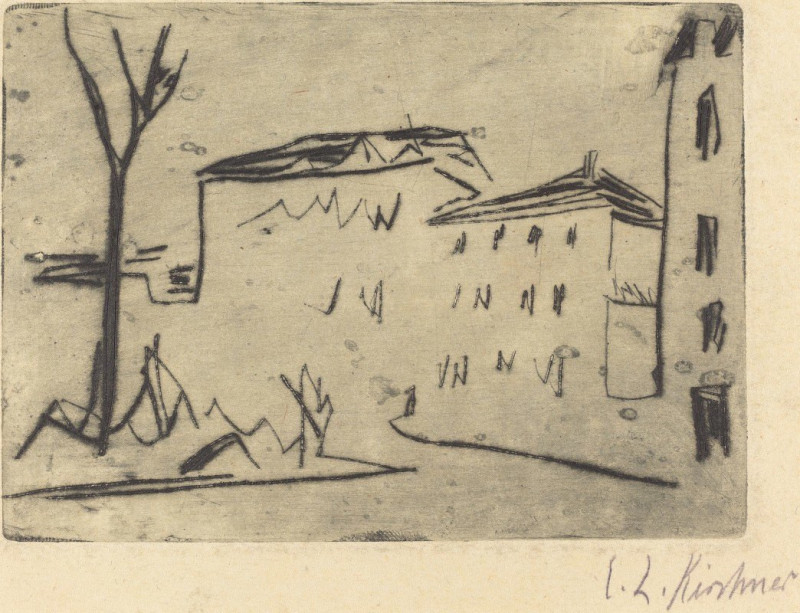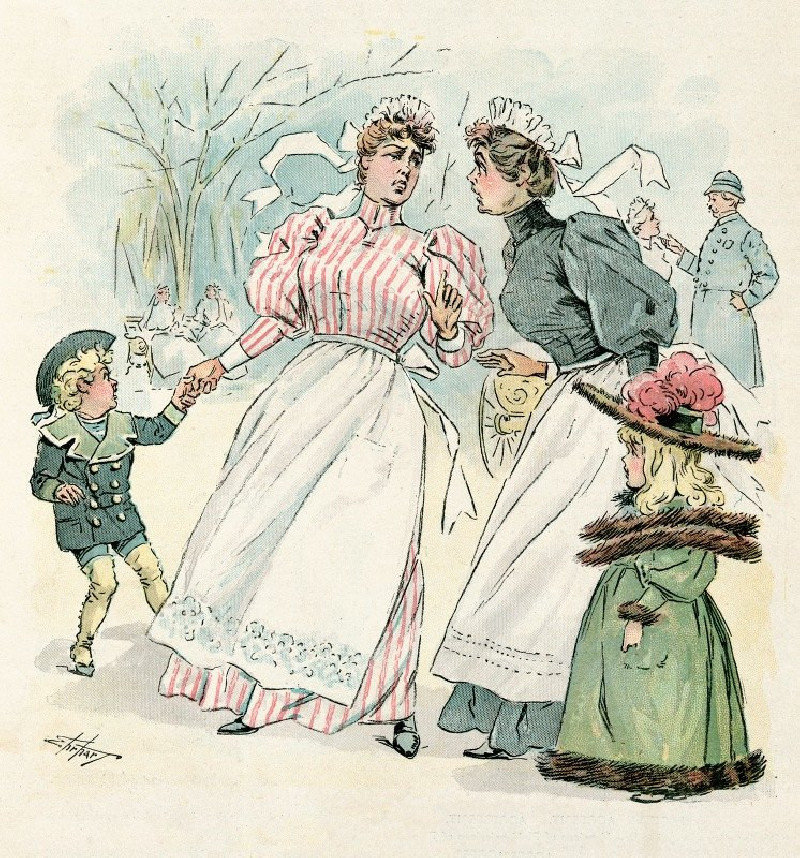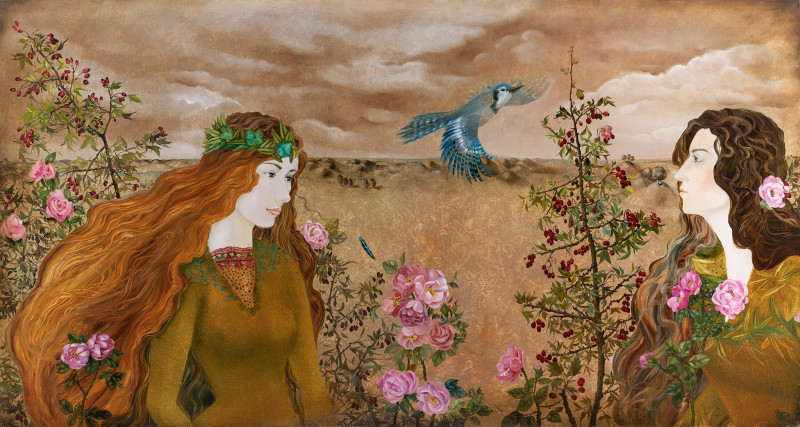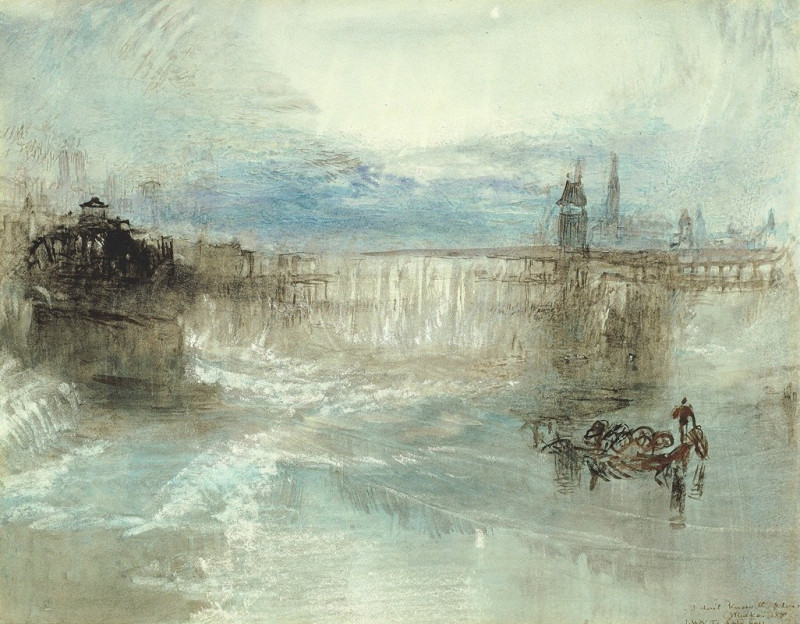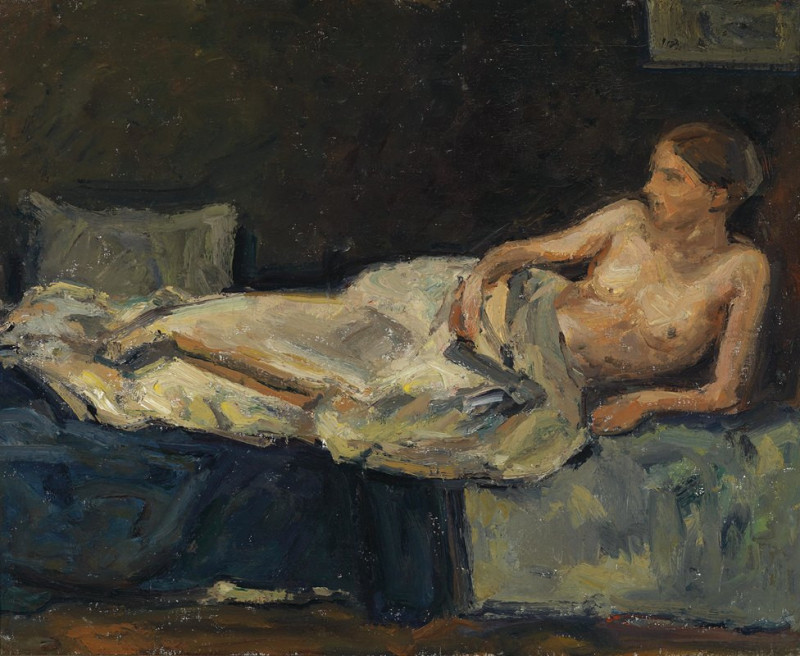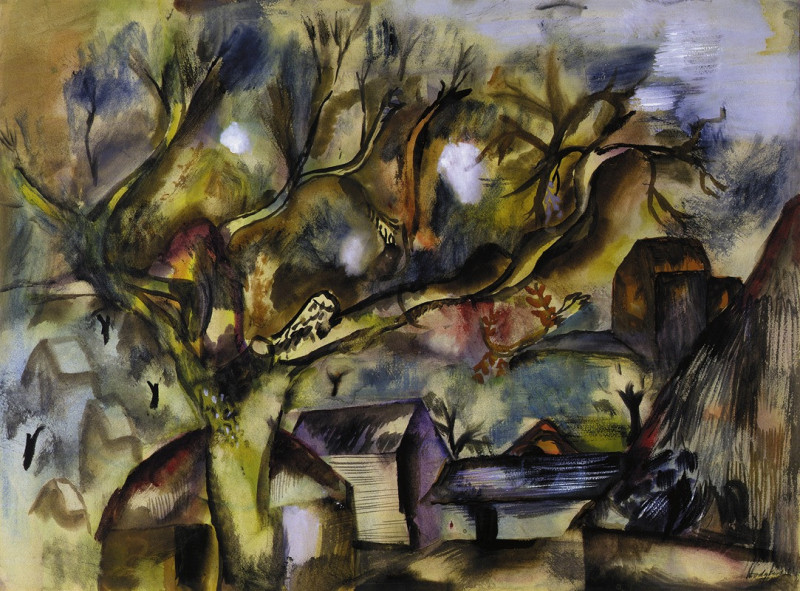Winter Landscape at Moonlight (ca. 1870)
Technique: Giclée quality print
Recommended by our customers
More about this artwork
Frederic Edwin Church's evocative painting, "Winter Landscape at Moonlight," captures the ethereal beauty of a winter scene under the gentle glow of moonlight. Dating back to around 1870, this artwork provides a glimpse into Church's masterful ability to convey natural landscapes in moments of tranquil beauty.In this painting, the viewer is presented with a vast stretch of subtly undulating terrain, cloaked in the dim light and shadows of a winter night. A small, rocky hill rises from the snowy expanse, topped with a few barren trees that huddle together against the cold. The sky, a deep and endless overcast, is suddenly broken by a dramatic and fiery crack where the moon, obscured by heavy clouds, casts a warm and golden light onto the clouds below it. This striking contrast against the subdued tones of the landscape highlights Church’s skill in playing with light and shadows.The melancholic yet peaceful atmosphere is enhanced by the understated detail and the broad, sweeping strokes of muted browns and grays that dominate the scene. Church's painting invites the observer to feel the serene silence and the crisp chill of the winter air, allowing one to momentarily step into the tranquil night depicted on the canvas."Winter Landscape at Moonlight" stands as a testament to Church’s artistic legacy, beautifully encapsulating the quiet majesty of nature and the nuanced interplay of light and darkness.
Delivery
Returns
Frederic Edwin Church (May 4, 1826 – April 7, 1900) was an American landscape painter born in Hartford, Connecticut. He was a central figure in the Hudson River School of American landscape painters, best known for painting large landscapes, often depicting mountains, waterfalls, and sunsets. Church's paintings put an emphasis on realistic detail, dramatic light, and panoramic views. He debuted some of his major works in single-painting exhibitions to a paying and often enthralled audience in New York City. In his prime, he was one of the most famous painters in the United States.

